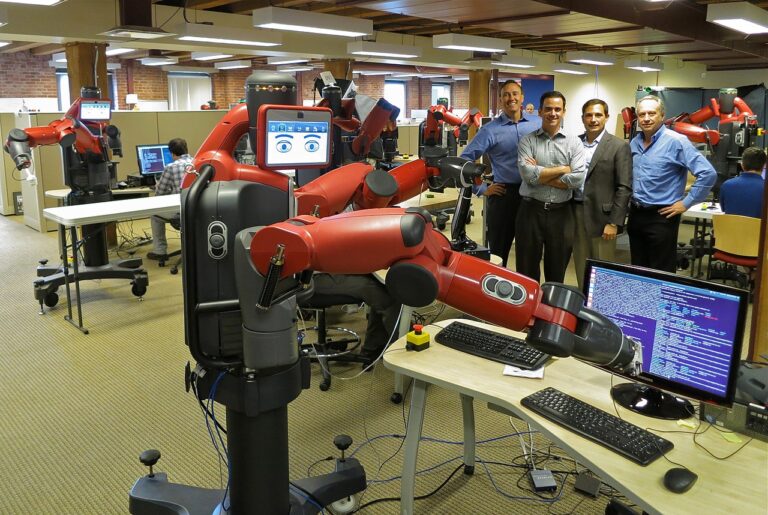PETA is taking a new approach to protecting animals: protecting the humans that work with them. According to Lydia DePillis at The Washington Post, PETA has filed a petition with OSHA asking that the agency prohibit humans from physically interacting with elephants in captivity, due to the dangerous nature of handling wild animals. The strategy is based on OSHA’s victory in a lawsuit against SeaWorld in 2014, disciplining SeaWorld for failing to adequately safeguard trainers dealing with orca whales, and arguing that trainers must be physically separated from them, rather than swimming with them unprotected. Although the ultimate focus for PETA here is the elephants themselves, who are controlled with chains and hooks in the circus industry, they have documented 135 instances of injuries to humans since 1990 and 17 deaths, a high number for such a small pool of workers. PETA has tried this strategy before, in 2011, filing a petition with OSHA, and the agency took no action. Since then, however, OSHA scolded an elephant sanctuary in Maine for the death of a handler, and the argument has become more mainstream, with the Association of Zoos and Aquariums requiring a “protected contact” system for elephant handlers at all member zoos, and circuses increasingly choosing to phase out elephant acts.
In spite of the seemingly ubiquitous discussions of the gig economy, especially in 2016 election news, we may not be in the midst of the economic revolution politicians and media suggest. The Wall Street Journal reported this weekend that according to “official government data,” 95% of those who report having jobs are accounted for on formal payrolls, which is almost the same as 10 years ago. Politico found this report “puzzling,” however, and pointed out that some data is missing. For instance, the proliferation of single-parent homes leads to an increase in multiple part-time jobs, which phenomenon is strangely absent from Labor Department surveys. According to research by Harvard economist Larry Katz, many multiple-job holders don’t list “gigs” on tax forms if they are in addition to regular jobs.
Following last week’s Fight for $15 victory–the proposal in New York seeking to increase minimum wage for fast-food workers to $15/hour–the New York Times took a critical look at the possible consequences of a wage increase that only applies to a narrow segment of the economy. The article suggested two problems that could result: fewer workers getting raises, and businesses doing things that customers may not prefer, such as bringing in lower quality food, rather than preparing food on site. Alternatively, such a narrow minimum wage rule might encourage businesses to change their business model so that restaurants aren’t part of chains, or don’t meet the legal definition of “fast food.” The Times also called on Larry Katz, who conceded that a narrow minimum wage increase is “probably better than doing nothing,” but suggested one solution with greater benefits and fewer costs: an increased general minimum wage.
In Europe, this theory–increased general wages–might be put to the test. The Wall Street Journal reports that Germany’s strong economy and record-low unemployment has led to an increase in labor costs. According to official German data, real wages rose at their fastest rate in the first quarter since 1992, when Germany’s economy boomed following unification. The rise in wages for German workers has led to criticism among business owners, worried that Germany will lose its footing as the strongest European economic power. On the other hand, the US and the International Monetary Fund, among others, support the increased labor costs, suggesting that Germany’s economy, long based on exports, might now provide Germans more money to spend on imports.






Daily News & Commentary
Start your day with our roundup of the latest labor developments. See all
December 4
Unionized journalists win arbitration concerning AI, Starbucks challenges two NLRB rulings in the Fifth Circuit, and Philadelphia transit workers resume contract negotiations.
December 3
The Trump administration seeks to appeal a federal judge’s order that protects the CBAs of employees within the federal workforce; the U.S. Department of Labor launches an initiative to investigate violations of the H-1B visa program; and a union files a petition to form a bargaining unit for employees at the Met.
December 2
Fourth Circuit rejects broad reading of NLRA’s managerial exception; OPM cancels reduced tuition program for federal employees; Starbucks will pay $39 million for violating New York City’s Fair Workweek law; Mamdani and Sanders join striking baristas outside a Brooklyn Starbucks.
December 1
California farmworkers defend state labor law, cities consider requiring companies to hire delivery drivers, Supreme Court takes FAA last-mile drivers case.
November 30
In today’s news and commentary, the MSPB issues its first precedential ruling since regaining a quorum; Amazon workers lead strikes and demonstrations in multiple countries; and Starbucks workers expand their indefinite strike to additional locations. Last week, the Merit Systems Protection Board (MSPB) released its first precedential decision in eight months. The MSPB had been […]
November 28
Lawsuit against EEOC for failure to investigate disparate-impact claims dismissed; DHS to end TPS for Haiti; Appeal of Cemex decision in Ninth Circuit may soon resume